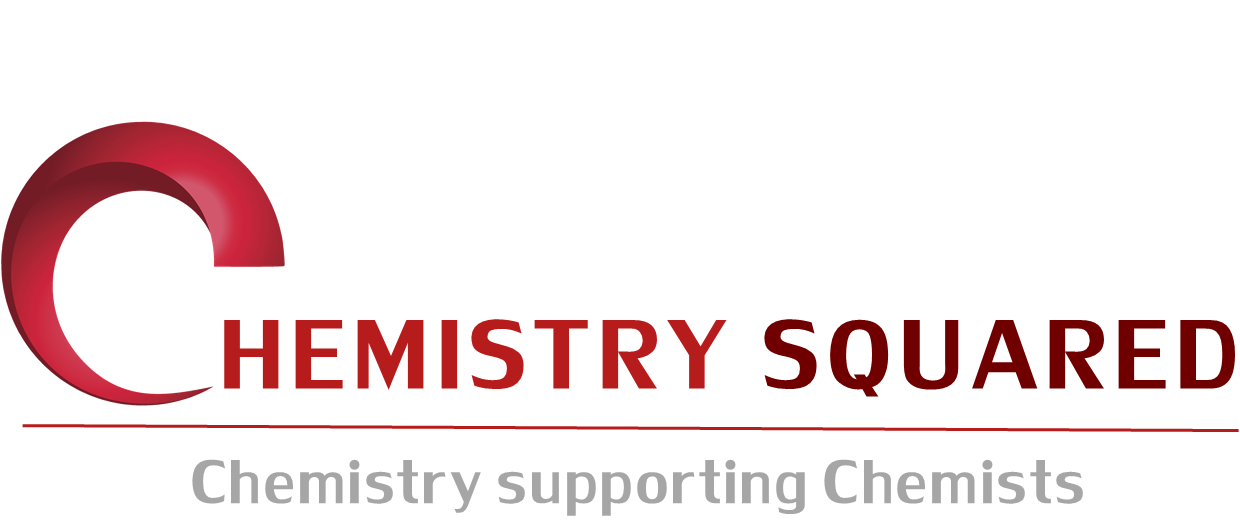
How to write your article
A Microsoft Word article template, an EndNote style file and a ChemDraw file can be downloaded from the links below. Please use these files to prepare your article.
If you prefer to use LaTex to prepare your manuscript, you can download a LaTex template from the corresponding link at the bottom of this page.
In addition to Full Papers, Chemistry2 also publishes Minireviews. Chemistry2 is committed to publishing top-tier fundamental chemical research in all areas of chemistry, in open access. Being an international journal targeting a worldwide audience, the articles are also read by scientists for whom English is a second language. Therefore, they should be written in a clear, concise and comprehensible manner using simply constructed sentences; unnecessary technical terminology, unreadable descriptions of the work that has been done, and convoluted figure legends should be avoided. Jargon and acronyms should also be avoided where possible. When indispensable, they should be defined at first use; subsequently, it is recommended that the author use pronouns when possible rather than using the abbreviation or acronym at every occurrence.
Chemistry2 publishes original, unpublished primary research in one format, Articles, of general interest to the chemistry community. Articles are generally 10–20 journal pages in length. Longer articles will be accepted if it is required by the nature of the report.
Please read very carefully the Author responsabilities before starting to write the article.
Title
The title should be of maximum 15 words; it should be comprehensible and enticing to a general reader, and detailed enough to properly reflect the article’s contents. The use of one or two essential keywords or recognizable terms within a title will be beneficial for web quests.
Authorship
Full names and affiliations for all the authors should be included. The article can have up to three corresponding authors (who should clearly be identified by asterisks and contact details), one of them signing a copyright licence on behalf of all the authors. If the manuscript has more than 10 co-authors, the main corresponding author should provide a statement specifying their respective contribution.
The ORCID iD may be published with the article next to the author’s name.
The e-mail address of the corresponding author should be given below the list of authors.
Abstract
It should be a single paragraph of 100–250 words and contain no references. It should serve as a general introduction to the topic and clearly and briefly summarize the main objectives and results of the work. The use of recognizable, searchable terms and keywords is highly recommended.
Main text
Ideally, the main text may contain up to 4,000 words and includes the 3 sections headed Introduction, Results and Discussion and Conclusions.
1. Introduction
The introduction should be an appropriately referenced text that clearly explains both the nature of the problem under investigation and the background of the work. It should start off general and then focus on the specific research question investigated.
2. Results and Discussion
This section should describe the most relevant results, organised into an orderly and logical sequence. Only the important points should be highlighted. Figures, tables and equations should be used for clarity and brevity purposes; it is advised to include up to 6 figures and/or tables. The data should not be duplicated, for example in both figures and tables. The discussion is aimed at explaining the meaning of the results achieved and their significance. The impact of these results should be stressed and compared with recent published work. Extensive reviews of the literature cannot be accepted; preferably, up to 60 references can be included. The results should be analysed in relation to the scientific question posed in the introduction; claims should be backed up by evidence.
3. Conclusions
The novelty and significance of the work should be highlighted, for instance through the interpretation of the most important results. This section should not be a summary of information already mentioned in the article or abstract. Plans for relevant future work stemming from that presented may be included.
Tables, Figures and Schemes
- Tables should be edited in the text using the table tools of Word. Tables should be provided with a brief legend (the word "Table" should be used throughout the text unabbreviated) and should only be subdivided by three horizontal lines (head rule, neck rule and foot rule). Tables should contain more than two columns and columns with more than two entries. For table footnotes, Garamond lowercase letters set in square brackets are to be used. All Tables are to be numbered (Arabic numerals) in the sequence in which they are referred to in the text.
All Tables (including those provided as Supporting Information) must be mentioned explicitly by number and appear in correct numerical order in the body of the text.
- Figures and Schemes (in TIFF, BMP, PNG or JPEG) with a resolution of 600 dpi or greater should be embedded in the text. These files (graphics) should fit within 12 cm (340 points) width, and must be no longer than 15 cm.
Chemical structures should ideally be prepared with the ChemDraw template provided (see below).
The settings below should be used:
- Chain bond angle = 120o
- Fixed bond angle = 15o
- Bond length = 0.508 cm or 14.4 pt
- Bond width = 0.021 cm or 0.6 pt
- Bold bond width = 0.071 cm or 2.0 pt
- Double bond space = 18% of bond length
- Stereo bond width = 0.056 cm or 1.6 pt
- Hash spacing = 0.088 cm or 2.5 pt
- Captions/atom labels = Arial/Helvetica, 8 pt
The Figure should be saved in TIF, BMP, PNG or JPEG format and embedded in the text.
All Figures (including those provided as Supporting Information) must be mentioned explicitly by number and appear in correct numerical order in the body of the text.
Additional Information
When appropriate, the following section may be included:
"Supporting information is available online. Correspondence and requests for materials should be addressed to X.X." (where X.X. are the initials of the corresponding author). See Supporting Info
Materials and Methods
All experiments should be described in sufficient detail to allow a skilled researcher to reproduce them. Only the most essential parts of the experimental procedures should be included in the manuscript; the remaining data should incorporated into the Supporting Information. For theoretical papers, technical details such as the computational methods applied should be described in an appropriately named section.
The Experimental Section should begin with the description of the equipment and conditions used for the measurement of the physical data.
All new compounds must be fully characterized by appropriate analytical methods, i.e. NMR spectroscopy, X-ray crystal structure analysis, elemental analysis. (Scanned) Copies of ALL spectra and characterization data (including analytical reports obtained with a CHNS analyzer) should be supplied in the Supporting Information. Failure to provide these data will result in the manuscript being withdrawn by the editor.
The purity of all new compounds should be confirmed by elemental analysis; the accepted deviation of the experimental results from the calculated/expected values is 0.4%. If the compound is unstable or not available in sufficient quantities for a complete elemental analysis, it should be clearly stated and shall be accepted if it does not affect significantly the consistency of the ensemble of the results reported in the paper.
The physical data should be presented as follows (in this order):
Rf = 0.23 (Hexane/EtOAc 9:1);
m.p. 128 °C;
[α]D20 = −13.5 (c=0.2 in acetone);
1H NMR (200 MHz, [D6]DMSO, 25 °C, TMS): δ = 1.45 (q, 3J(H,H) = 8 Hz, 2H; CH2), 0.87 ppm (t, 3J(H,H) = 8 Hz, 3H; CH3);
13C NMR (75 MHz, CDCl3, 25 °C, TMS): δ = 71.8 (CCH), 26.5 (s; CH3), 6.3 ppm (d, 1J(C,P) = 155.7 Hz; CHP);
IR (KBr disc): ν = 1785, 1794 cm−1 (C=O);
UV/Vis (n-hexane): λmax (ε) = 345 (5000), 276 nm (12600 mol−1dm3cm−1);
MS (70 eV): m/z (%): 108 (20) [M+], 107 (60) [M+], 91 (100) [C7H7+];
Elemental analysis calcd (%) for C23H36N2O5: C 65.69, H 8.63, N 6.66; found: C 65.78, H 8.41, N 6.47.
The computer-assisted enhancement of an image is acceptable whenever it does not result in less relevant or unrepresentative data and in the loss of significant and genuine signals; a clear relationship must remain between the original data and the electronic image arising from those data. Any electronic modification of an image should be explained/mentioned in the figure caption. If the computer-assisted processing or modification of an image is an essential part of the experimental work, then it must be clearly described in the Experimental Section.
In-vivo experiments: a statement that permission was obtained from the relevant national or local authorities must be included. The institutional committees that have approved the experiments with animals must be clearly identified. Furthermore, the accreditation number of the laboratory or of the investigator who carried out the experiments should be mentioned where applicable. If such rules or permissions are not operating in the country where the experiments were performed, then this must also be clearly specified. Manuscripts describing experiments with human beings or tissue samples from persons must include a disclaimer to state that informed, signed consent was obtained from either the patient or next of kin.
Conflicts of interest
A conflicts of interest statement is required and should be placed here. If no conflicts exist, then the sentence 'The authors declare there are no conflicts of interest' should be mentioned.
Acknowledgements
Notes acknowledging all sources of funding should be placed in this section. Professional assistance from contributors not included as co-authors may be briefly acknowledged herein.
References
Reference numbers should be typed in square brackets and before the punctuation, if applicable ─ for example, “science for science [4].”. Journal titles should be abbreviated according to the Chemical Abstracts Service Source Index (CASSI; http://cassi.cas.org/search.jsp).
References should be numbered sequentially through the text (including those in tables and figure captions; their numbering should be consistent with the location of the table or figure in the text). Only one publication is given for each number. Multiple references should be cited as follows: two consecutive citations will be quoted as [9,10] (using commas and without spaces between them); more than two citations with non-consecutive numbers will be quoted as [9,10,16]; more than two citations with consecutive numbers will be quoted as [9─11] (the first and last citation should be separated by an en-dash).
Only published or accepted papers by a known journal or recognized preprint server can be cited in the numbered list; preprints of accepted papers mentioned in the reference list should be provided for the refereeing process. Numbered patents, published conference abstracts or research datasets holding a digital object identifier can be included in the reference list. Excessive self-citation is not permitted and up to 60 references are recommended.
The full references should be listed in numerical order at the end of the main text, using Chemistry2 referencing style (the corresponding EndNote style file can be downloaded below). Please follow the examples below:
- Journal articles should be cited in the form: [1] Name A., Name B., Name C., Journal Abbreviation, Year, Volume, first page─last page. When page numbers are not yet known, articles should be cited by DOI (Digital Object Identifier).
- Books should be cited in the form: [2] Name A., Name B., Name C. Book Title, Xxx Edition, vol. XX. Publisher: City, Year.
- Book chapters should be cited in the form: [3] Name A., Name B., Name C. Title. In: Editor Names(s) (ed.). Book Title, Xxx Edition, vol. XX. Publisher: City, Year, first page─last page.
- Theses should be cited in the form: [4] Name A. Title. PhD thesis, University, City, Year.
- Web pages should be cited in the form: [5] Name A., Name B., Name C. Title, [cited Access Year]. Available from URL (the most important information to be provided is the URL and the year accessed).
- Lectures, meetings & conferences should be cited in the form: [6] Name A., Name B., Name C., presented at Conference Name, Place, Year.
- Patents should be cited in the form: [7] Inventor(s); Assignee(s). Title. Country ´patent´Patent Number. Year date.
- Softwares should be cited in the form: [8] Name A., Name B., Name C., Title (Version), Publisher, City, Year.
- Unpublished material should be cited in the form: [9] Name A., Name B., Name C., Journal Abbreviation, in press or submitted; [9] Name A., Name B., Name C., unpublished work.
- Preprint servers should be cited in the form: [10] Name A., Name B., Name C., Name of Database, URL.
Notes
Any notes relating to the main text should appear at the end of the article, just above the references. These might include:
- comments relevant to but not central to the matter under discussion
- limited experimental and spectral data
- crystallographic data.








